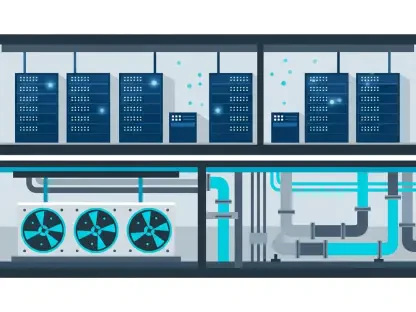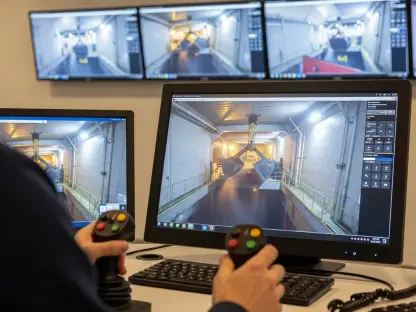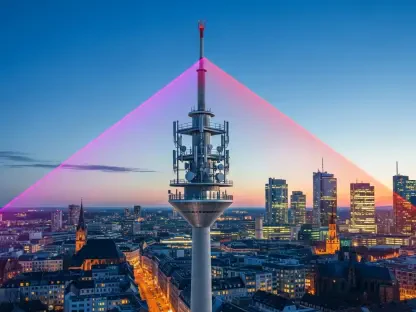I’m thrilled to sit down with Vladislav Zaimov, a seasoned telecommunications specialist with deep expertise in enterprise telecommunications and risk management of vulnerable networks. Today, we’re diving into the groundbreaking advancements in 5G technology, focusing on innovative AI architectures that are pushing the boundaries of network performance. In this conversation, we’ll explore how these cutting-edge developments enhance speed and reduce delays, the role of advanced hardware in future networks, and the practical benefits for both users and telecom providers. Let’s get started with Vladislav’s insights on the latest strides in this dynamic field.
How would you describe the recent advancements in AI architecture for 5G networks, particularly with Transformer-based models?
Well, the latest advancements, especially with Transformer-based models, are a game-changer for 5G networks. Unlike older methods that relied heavily on manual configurations or less adaptive algorithms, this approach uses AI to dynamically optimize radio access networks, or RAN. Transformers, originally from natural language processing, are now being tailored for wireless signal processing. They excel at handling complex patterns in data, which means they can predict and adjust network parameters in real time, leading to significant performance boosts. It’s a shift from static to highly adaptive systems, and it’s exciting to see this level of intelligence integrated into telecom infrastructure.
What kind of impact does a 30% boost in 5G uplink throughput have on the everyday user experience?
A 30% boost in uplink throughput is huge for users because it directly affects how quickly you can send data—like uploading videos, sharing large files, or even streaming high-quality content during a live event. For the average person, this means smoother, faster interactions with cloud services or social media. Compared to current 5G networks, where upload speeds can sometimes lag behind download speeds, this improvement makes the experience more balanced and reliable, especially in crowded areas like stadiums or urban centers. It’s a noticeable upgrade for anyone who relies on real-time data sharing.
Why is reducing latency to just 338 microseconds such a critical achievement for 5G technology?
Latency at 338 microseconds is a massive leap forward because it’s well below the one-millisecond threshold needed for true real-time communication in 5G. This kind of speed is crucial for applications like autonomous vehicles, remote surgeries, or even immersive gaming, where even a tiny delay can cause issues. It ensures that data travels almost instantaneously between devices and the network. When you compare this to older models, like those based on Convolutional Neural Networks, the reduction is about 26% faster, which shows how much more responsive the system is. It’s really setting a new standard for what 5G can deliver.
Can you walk us through the significance of achieving up to 31% downlink speed improvements for moving devices in simulations?
Absolutely. The 31% downlink speed improvement in simulations for moving devices—think cars, trains, or even drones—means that users can maintain high-quality connections even at speeds like 40 or 80 kilometers per hour. These simulations typically model scenarios where devices are handed off between base stations, which can often degrade performance. By using AI to predict and optimize beam assignments, the network ensures that data downloads remain fast and stable. For businesses, this could transform logistics with real-time tracking, and for everyday folks, it means seamless streaming or navigation while on the move. It’s a big step toward ubiquitous connectivity.
How do high-performance AI models and GPUs contribute to the evolution of 5G-Advanced and future 6G networks?
High-performance AI models and GPUs are the backbone of pushing 5G-Advanced and eventually 6G to their full potential. GPUs provide the raw computational power needed to process complex AI algorithms in real time, especially under tight constraints like sub-millisecond latency. They allow the network to analyze massive amounts of data instantly, optimizing everything from signal strength to resource allocation. Looking ahead to 6G, where we expect even denser networks and more demanding applications, these components will be essential for handling the scale and speed required. They’re basically the engine that makes futuristic connectivity possible.
What are the practical benefits for telecom carriers when performance upgrades can be delivered through software updates in AI-RAN systems?
For telecom carriers, the ability to upgrade performance through software updates in AI-RAN systems is a massive win. It means they can enhance network capabilities without constantly swapping out expensive hardware. As newer, more advanced AI models come along, carriers can simply deploy updates to improve efficiency or capacity, much like updating an app on your phone. This approach cuts down on capital expenditure, reduces downtime, and allows for quicker adaptation to user demands or technological shifts. It’s a more sustainable and cost-effective way to keep networks cutting-edge.
What were some of the toughest hurdles in developing a lightweight Transformer-based architecture for 5G networks?
Developing a lightweight Transformer-based architecture was no easy feat, primarily because we had to balance high performance with incredibly strict timing constraints—processing needed to stay under one millisecond. Transformers are powerful but can be resource-heavy, so the challenge was stripping them down to focus only on essential processes without losing effectiveness. This meant rethinking how the model prioritizes data and interacts with hardware like GPUs. It was a lot of trial and error to ensure low latency while still maximizing communication quality, but overcoming those hurdles has paved the way for practical, real-world deployment.
What is your forecast for the future of AI-driven innovations in telecommunications, especially as we move toward 6G?
I’m incredibly optimistic about the future of AI-driven innovations in telecom, particularly as we gear up for 6G. I believe we’ll see AI become even more integrated into every layer of network management, from predictive maintenance to hyper-personalized user experiences. With 6G, the focus will likely shift to ultra-dense networks and applications we can barely imagine today, like holographic communication or massive IoT ecosystems. AI, paired with advancements in hardware, will be key to managing that complexity while keeping latency and energy use in check. We’re on the cusp of a truly transformative era, and I think the next decade will redefine how we connect and interact with technology.









